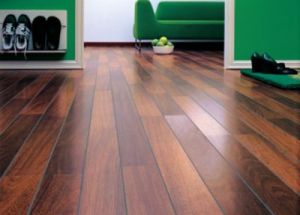Parquet is a unique finishing material in all respects. Its visual appeal and advantages are undeniable, so we will not focus on them, but let's talk about the peculiarities of the technology of laying parquet boards on glue and how to choose the most suitable adhesive for a particular case. It's no secret that it is the quality characteristics of the glue that determine the procedure for laying, appearance and durability of the finished floor covering.
Requirements for parquet glue
Perfect laying of parquet floor and its long operation are largely determined by the correctness of the choice of quality adhesive, so its choice should be handled responsibly and even meticulously. It is necessary to understand that the adhesive composition is incorrectly selected, of poor quality, with expired shelf life, and also overdue, sold at bargain prices, will necessarily show its worst properties during operation, but, alas, you can not fix anything.
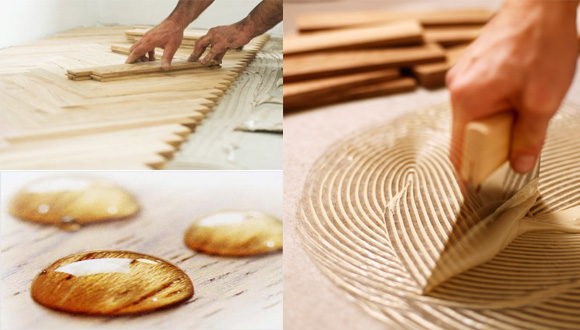
When choosing parquet glue, it is necessary to pay attention to the basic requirements for the composition:
- the glue must be distinguished by the durability and reliability of the adhesion of the parquet boards to the base of the floor. The composition of high quality is able to hold parquet in its place for 100 years, thus increasing its operational period;
- in the composition of high-quality parquet glue, there should not be a lot of water, otherwise excess moisture will hit the surface of the parquet causing it to swell and deform, and subsequently - to the appearance of a squeak. And, using such a water-based glue for laying parquet from expensive, exotic woods containing oils, you risk getting poorly glued parquet boards to the floor base;
- adhesive composition for laying parquet should not contain a solvent and substances that are dangerous to the health and lives of surrounding people. If in the process of arrangement of a floor you have felt a sharp smell from glue, means, one of components in its structure is the solvent. Such glue is extremely dangerous, because even when you stop feeling an unpleasant smell, the solvent vapors will continue to flow into the surrounding air, poisoning it;
- good adhesive for parquet has unique properties of residual elasticity even after hardening. This allows natural wood to mimic natural processes - expand and shrink under the influence of external factors such as moisture and temperature changes;
- parquet glue of good quality should not shrink with time, which otherwise can lead to weakening of the slats and the appearance of an unpleasant squeak.
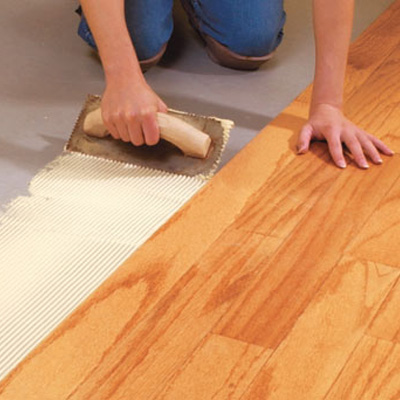
Types of parquet glue
Quality parquet laying is possible when using 3 kinds of glue.
dispersive adhesive
Being the safest and environmentally friendly compound, dispersion dispersion is widely distributed among European consumers. Due to the water content in it in sufficient quantity, the adhesive releases non-toxic and non-hazardous vapors at the time of solidification, which means that it is effective in residential areas.
On the market of building materials, you can find a huge range of water-dispersion compositions that differ from each other in the percentage of water in them. It should be remembered that the more in the composition of the glue of water, the lower the cost of glue.
Water-dispersion adhesive is ideally suited for laying oak coating, as the oak is strong enough and resistant to moisture, and the arrangement of small parquet flooring.
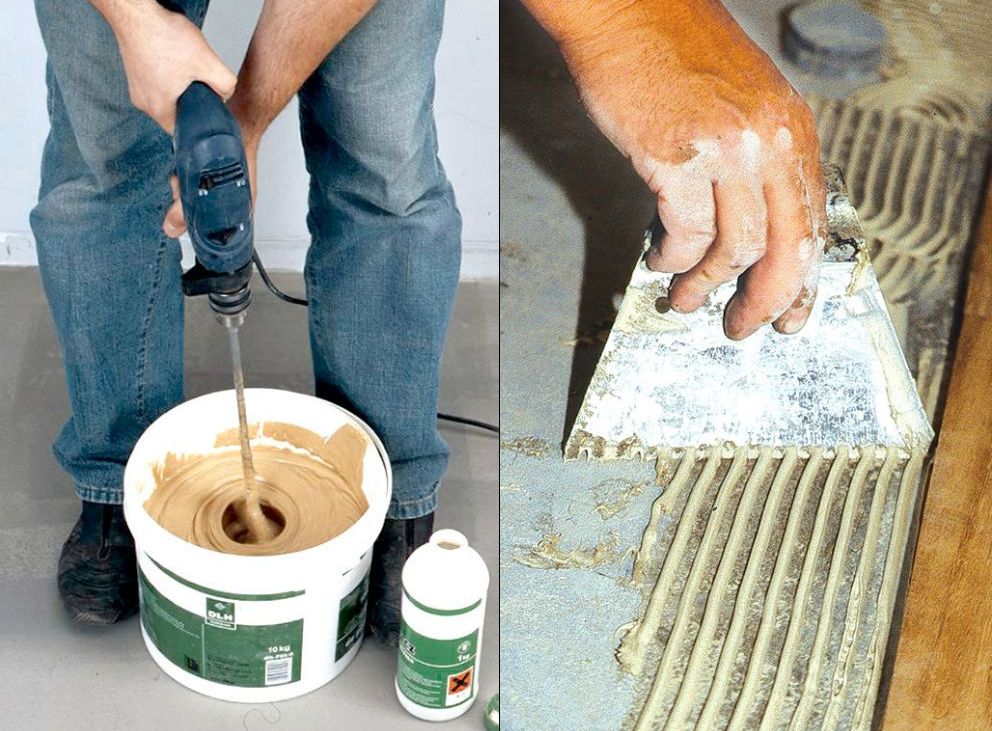
Note that water, even in small amounts, can have a detrimental effect on the state of the wood, subject it to deformation and rot.
Wood of fruit trees - apple, pear and cherry, as well as ash and maple, has less moisture resistance, so even a small amount of water falling on the surface of the parquet can deform the boards, especially if their thickness is minimal, and the glue contains up to 36% water. To lay parquet from such a "whimsical" wood, it is better to use another glue.
solvent based adhesive
Work on the laying of parquet floor is often carried out using solvent-based glue. B due to the lack of water in this composition, the compound is absolutely suitable for any wood and has a high bond strength.

When open, solvent based adhesive can be stored for up to 15 minutes. This will allow you to more quietly equip the parquet floor and adjust the already laid strips. For complete hardening, you need up to 5 days, but you can grind the laid coating even earlier.
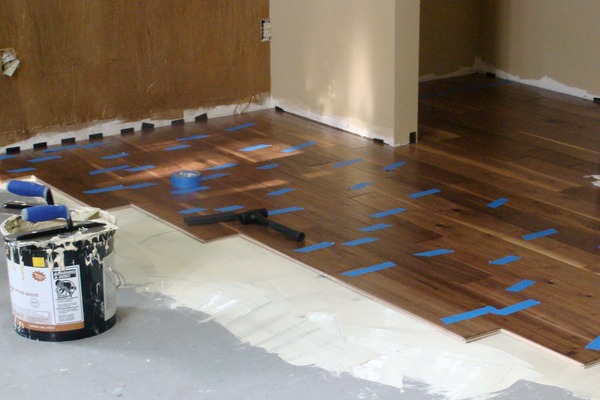
Traditionally, such glue is used for laying a parquet made of wood, which is prone to swelling and other deformation under the influence of water. Caution should be exercised when working with rubber glue for parquet - solvent based composition is explosive and easily flammable. Therefore, it is strictly forbidden to use an adhesive compound close to ignition sources, and also to smoke during the arrangement of the floor.
bicomponent reactive adhesive
The most durable and reliable adhesive composition from the samples on the market is reactive or two-component glue. The curing process is carried out by chemical reactions that occur after the addition of a special hardener component. Hence the name of the glue - two-component.
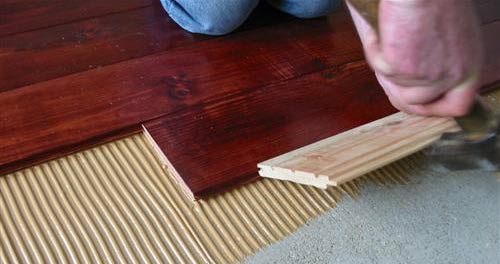
Such a formulation contains neither solvents nor water. Full hardening occurs around the end of the first day.The strength of adhesion is 3 times higher than the strength of a conventional adhesive composition, which makes it the most universal and sufficiently popular for carrying out work on any foundation - concrete, wooden, plywood and any wood, including the elite for the creation of artistic parquet.
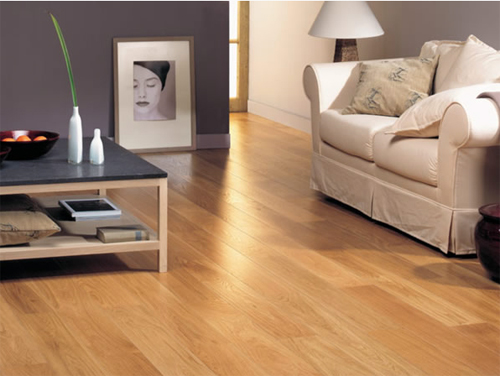
The only drawback of the two-component jet glue is its high cost, but it can be justified by its excellent quality, high adhesion and long-term operation. However, it must be remembered that until the glue is completely solidified, it will release into the atmosphere chemical substances that are harmful to health. The only way out is to work exclusively in respirators or protective masks. The frozen substance does not present any danger.
So, choosing parquet glue, you will have to consider many factors - the type of the base and wood, the degree of adhesion and the time of hardening, and the criteria - quality, strength, elasticity, service life.
For each specific case it is better to choose the appropriate adhesive. How to lay a parquet on glue? Enjoy the video on youtube.
The right choice for you!


